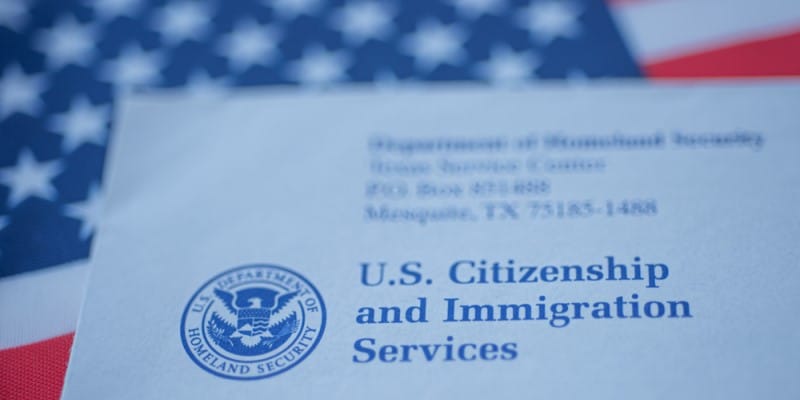
By Anayat Durrani
The U.S. Citizenship and Immigration Services (USCIS) recently updated their EB-5 Questions and Answers page to provide further clarity to investors and industry stakeholders. One of the updated questions addresses whether it is possible for an investor who has satisfied the investment and job creation requirements to skip the conditional permanent resident (CLPR) period and become a lawful permanent resident without conditions under the Immigration and Nationality Act (INA) 216A.
“The new guidance of having the capital eligible for redemption after JCE’s usage of it for two years was a topic covered in just about every panel in this year’s EB-5 & Global Immigration Expo in Newport Beach,” says Marko Issever, chief executive officer, America EB5 Visa, LLC.
Issever says that the change was welcomed for the most part as it addresses EB-5 investors’ long wait times “for capital redemption due to delayed processing by USCIS and retrogression affecting investors from countries such as China.”
The update clarifies EB-5 two-year sustainment period and I-829 petitions
The USCIS updated its Q&A page in December 2023 on topics ranging from integrity fee requirements to the I-956G form and regional center withdrawals. In particular, question number four under General Implementation addresses how the sustainment period change affects the conditional permanent residence requirement.
“The question posed to USCIS is envisioning a scenario where an EB-5 investor invests the full $800,000.00, has their capital at risk for not less than two years under the new sustainment guidelines, creates 10 jobs pursuant to an updated economic study published after the project is completed, and has yet to receive an adjudication of their I-526 petition,” says Dennis Tristani, Tristani Law, LLC.
In this scenario, Tristani says the investor would have satisfied the requirements for having their I-526 approved, assuming cleared source and path of funds, and the I-829 form requirements of sustainment and job creation.
“Therefore, depending on I-526 adjudication timelines, you could have a scenario where an investor is filing an I-829 with the same documentation/information that was available prior to their I-526 being approved, thus raising the question, why is the I-829 necessary if the conditions that had to be satisfied for removal were already satisfied prior to the investor receiving their conditional green card?” says Tristani.
The guidance, Issever says, establishes that the redemption period is only a function of project-related issues: a) The JCE usage of funds for at least two years and b) the fulfillment of requisite job creation.
“In the words of USCIS, INA now requires only that the investment must be expected to remain invested for at least two years, provided job creation requirements have been met. This guidance will also effectively eliminate redeployment risk as investors will be ready for capital payback much sooner,” says Issever.
Long processing times lead to easing of EB-5 capital redemption requirement
The USCIS’ updates to the Q&A also noted that the EB-5 Reform and Integrity Act of 2022 (RIA) “did not change the requirement under INA 216A that all EB-5 investors obtain lawful permanent resident status on a conditional basis subject to having those conditions removed by satisfying applicable requirements under INA 216A.”
Per the USCIS, EB-5 investors with CLPR status subject to INA 216A are required to file Form I-829 within the 90-day period just before the second anniversary of their adjustment of status or of being admitted to the U.S. as a conditional permanent resident to remove this condition.
“USCIS’ response is correct as the RIA did not change the law requiring all investors to file an I-829 at the end of their CLPR period, even if the new and shorter sustainment period creates unique scenarios where an I-829 filing doesn’t make a ton of sense given the fact that the requirements were already satisfied,” says Tristani.
Issever says that before this updated guidance, the definition of sustainment period was holding the conditional green card for two years. He adds the conditional green card requirements and subsequent eligibility to file for a permanent green card did not change.
“Ninety days before the fulfillment of this period, investors could file their I-829 petition to obtain their 10-year permanent residency,” says Issever. “The filing of this petition also gave them the clearance to request the redemption of their capital. USCIS, with its recent guidance, relaxed the capital redemption requirement given the unusually long processing times. Immigration-related procedures have not changed so far.”
Issever notes that while the EB-5 industry welcomes the updated guidance by the USCIS favoring new investors to become eligible for fast capital redemption, he cautions that it may lead to investments in risky projects desperate for capital.
“The consensus seems to be that the required JCE capital usage period should be five years, as most stable projects need that tenor to build and safely execute an exit strategy to return EB-5 capital,” says Issever.
DISCLAIMER: The views expressed in this article are solely the views of the author and do not necessarily represent the views of the publisher, its employees. or its affiliates. The information found on this website is intended to be general information; it is not legal or financial advice. Specific legal or financial advice can only be given by a licensed professional with full knowledge of all the facts and circumstances of your particular situation. You should seek consultation with legal, immigration, and financial experts prior to participating in the EB-5 program Posting a question on this website does not create an attorney-client relationship. All questions you post will be available to the public; do not include confidential information in your question.








